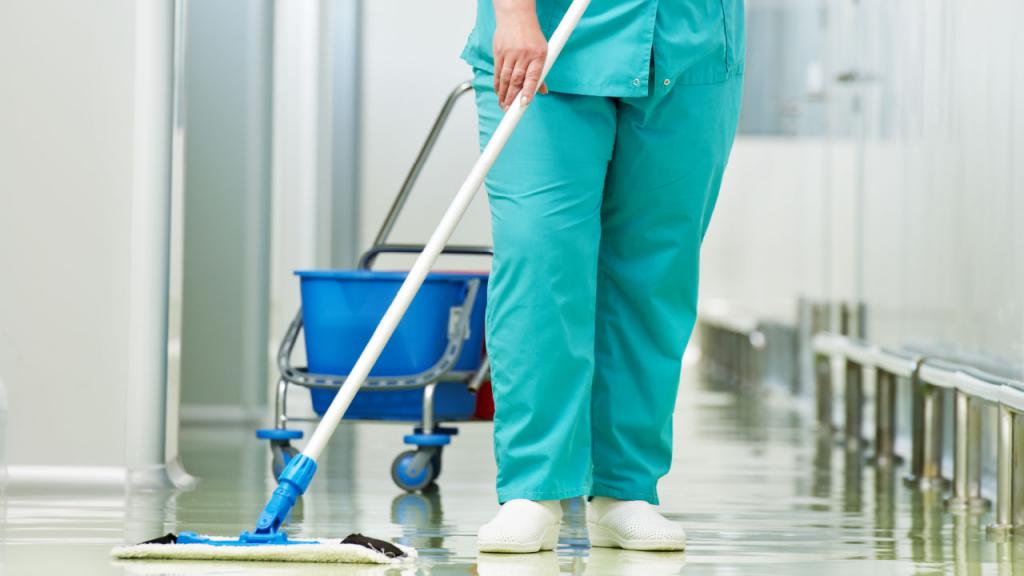Cleanliness is one of the most important health conditions. After all, it is the bacteria that cause most diseases. It is very important to maintain the cleanliness of not only the body, hands, but also the room. Cleanliness in a medical institution should be ideal, since it is here that not only sick people come, but also healthy people. Hospitals should not be a breeding ground for infections, but rather contribute to maintaining the health of citizens. Therefore, cleaning in such establishments is carried out in accordance with special rules and has special approved instructions. Consider the rules for general cleaning in medical institutions.
What are the cleaning
In hospitals should always be clean. It is this condition that will not allow the spread of nosocomial infections. For this, general cleaning in medical institutions is not enough. Types of restoring order, which still have to be implemented, we will consider further:
- Pre-cleaning.
- Current.
- The final one.
- General.
Let's consider what goals each of them pursues:
- Pre-cleaning is carried out at the beginning of the day. Dust removal. A nurse in special clothes and gloves uses rags with a disinfectant solution to remove dust from surfaces. The floors are washed by a nurse. In conclusion, include a bactericidal lamp for 1 hour.
- Routine cleaning is carried out during the working day, removing pollution. Disinfect inventory, dressings. Wipe the surface with a disinfectant solution. They wash the floor and turn on the bactericidal lamp.
- Final cleaning is carried out at the end of the working day. It is necessary to ensure constant readiness of the premises for work. In addition to disinfecting surfaces, they wipe the walls and mop the floor. At the end, quartzization is carried out.
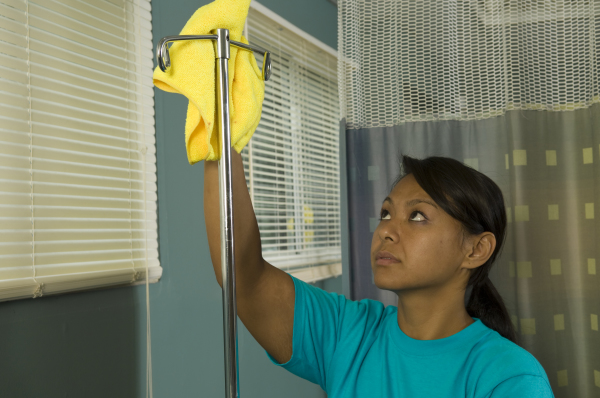
- Clear-out is carried out according to the established schedule. The goal is to reduce the risk of infection and keep microbes to a minimum.
We will talk about how the general cleaning is carried out in medical institutions.
General Cleaning Schedule
Each medical institution has its own cleaning schedule.
General cleaning in medical institutions is carried out depending on the type of purpose of the premises:
- Chambers and functional rooms - at least 1 time in 7 days.
- Premises in which aseptic conditions for procedures are maintained - 1 time in 7 days.
- Therapeutic rooms - 1 time per month.
- Surgery units, delivery rooms, sterilization rooms, manipulation rooms, treatment rooms - once a week.
- Diagnostic laboratories that work with native blood, serum - 1 time per month.
- Dental office of a surgical profile - 1 time in 7 days.
- In blocks with newborns and premature babies - every 10-12 days. At the same time, children are transferred to another disinfected room.
Schedule of general cleaning in a medical facility is a senior nurse. Approved by the head of the department. A responsible person is appointed who, after cleaning, makes a note in the magazine.
The main stages of the cleaning
General cleaning in medical institutions consists of two stages:
- Sanitary and hygienic.
- Disinfection.
The first stage includes washing surfaces, their deep cleaning. Damage repair, restoration of protective coatings.
The procedure for conducting general cleaning in medical institutions at the second stage is as follows:
- Disinfection of surfaces.
- Inventory disinfection.
- Air disinfection.
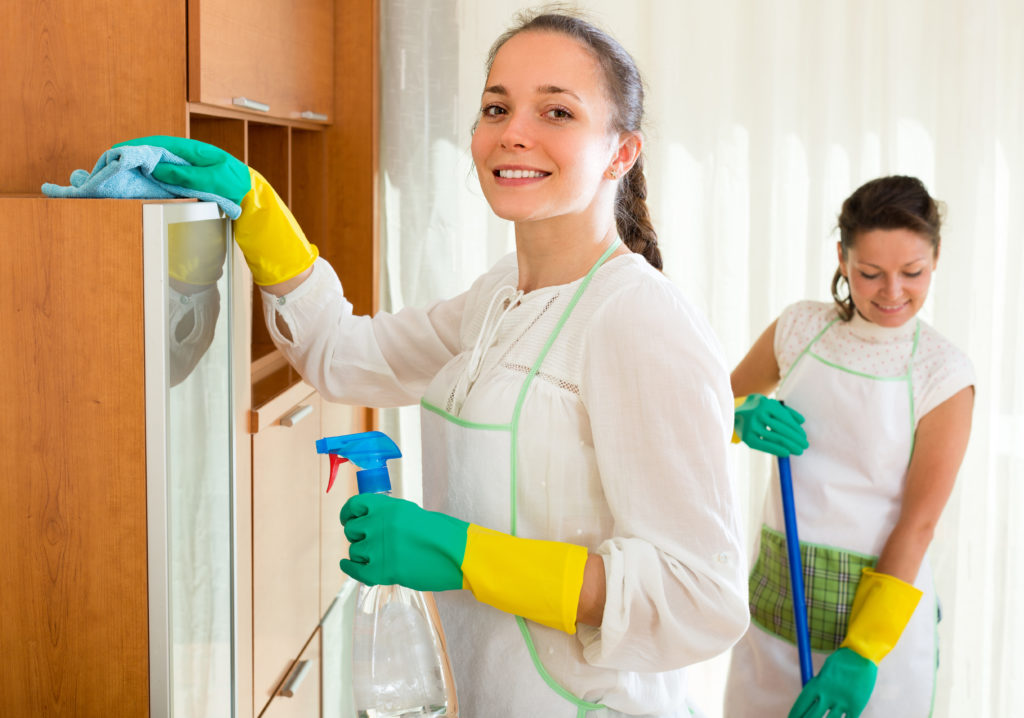
Who is allowed to clean
Medical staff must clean:
- Nurses.
- Specially trained nurses.
For general cleaning in a medical institution, the requirements for cleaners are as follows:
- At least 18 years old.
- It is necessary to undergo special training on working with disinfectant solutions.
- Know the instructions for your job responsibilities.
- Get a medical examination.
- People with hypersensitivity to chemical solutions are not allowed to clean.
- Personnel should know how to assist with disinfectant poisoning.
There is an instruction for carrying out general cleaning in a medical institution. It should be examined by the medical staff who will be cleaning.
What is included in the equipment
For cleaning you need:
- Protective clothing. Gloves, respirator, hat, goggles, rubber shoes.
- Container for disinfectant solutions and clean water. They must be marked accordingly.
- Clean rags, mops for the floor, walls and ceiling. Ruffs for batteries.
- Disinfectant solutions.
- Detergents.
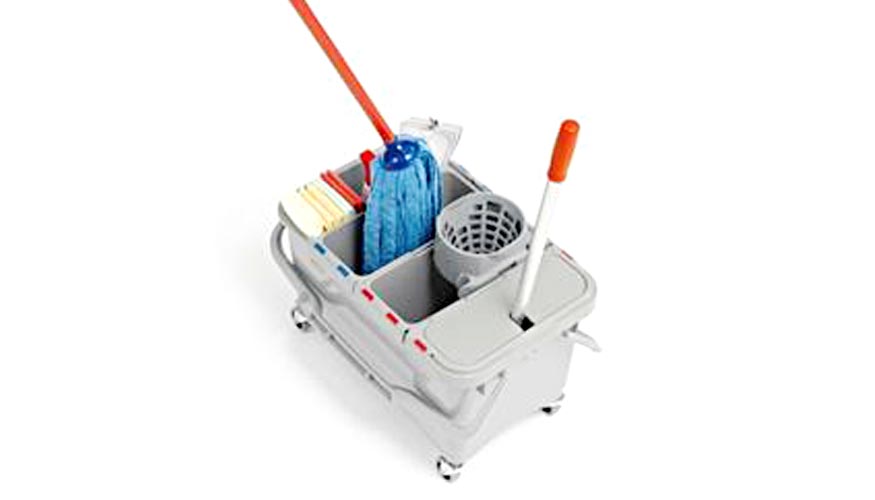
In order to start cleaning, you must prepare the inventory.
Inventory requirements
All items intended for cleaning should be marked. These include:
- Rags.
- Napkins 8 pieces.
- Washcloths.
Before cleaning, they are sterilized. Store in a designated place. Use only for those rooms for which they are intended.
Also subject to marking:
- Capacity for disinfectant solutions.
- Pots.
- Buckets.
- Capacity for washing solutions.
- Mops - 2 pieces.
- Container with lid for soaking used rags.
It is necessary to carry out preparatory work before starting the general cleaning in medical institutions. The instruction contains instructions on how to proceed.
Preparatory Activities
In order to begin the general cleaning, it is necessary to prepare the room. Namely:
- To clear cabinets of medicines.
- Free the shelves and tables for processing.
- Take out food products.
- Defrost the refrigerator.
- Move furniture away from walls.
- Take out the trash.

- Dispose of disposable medical waste.
- Remove equipment and tools from the cabinet.
- Disconnect electrical appliances.
After the premises have been prepared for cleaning, disinfecting and washing solutions are prepared.
What solutions are used
To carry out routine and general cleanups in medical institutions, it is necessary to have a three-month supply of detergents and disinfectants.
The following solutions are prepared for general cleaning:
- Soap-soda 0.5% solution. For 10 liters of water add 25 grams of soap chips and 25 grams of soda ash.
- Chloramine solution. For 10 liters of water, 500 grams of Chloramine.
- The solution of hydrogen peroxide. Take a 6% solution into a bucket of water and add 0.5% detergent.
- From mold fungi, a 0.2% solution of Lizorin is treated. For 10 liters of water - 20 ml of Lizorina.
Use new-generation drugs in tablets for the preparation of solutions:
- For a 0.1% Deochlor solution, 7 tablets per bucket of water are needed.
- For 0.1% Solikor solution - 7 tablets.
And also there are such drugs as Septodor, Lysoform, Inseptusin and others. They differ in a wide spectrum of action, are economical to use.
Gloves should be used during solution preparation.
The first stage of cleaning
Let's consider what the algorithm of actions at the initial stage is for general cleaning in a medical institution:
- Prepare the room and surfaces for processing, freeing from debris and excess objects.
- Prepare inventory marked for the appropriate room.
- Wear special clothing: hat, mask, gloves, apron, special shoes.
- Prepare a washing solution.
- Prepare a disinfectant solution.
Then you can proceed to the main actions.
The second stage of cleaning
A solution of soap and soda is used, they are washed:
- Ceiling and walls. For the ceiling, use a mop with a long handle. A container marked for walls is filled with mortar. Start from the ceiling. They also wash shades, bulbs. Processing is carried out in one direction. Walls are washed from the door from left to right and from top to bottom.
- Batteries Water pipes. For batteries use a special brush.
- Windowsills Frames and glass.
- The surfaces of cabinets, tables, shelves. Use rags with markings for furniture. First, wash the inner surface, then the outer. Top down.
- Door handles, cranes.
- Sink. Use a cleaning agent.
- Fridge. Wash with a separate rag.
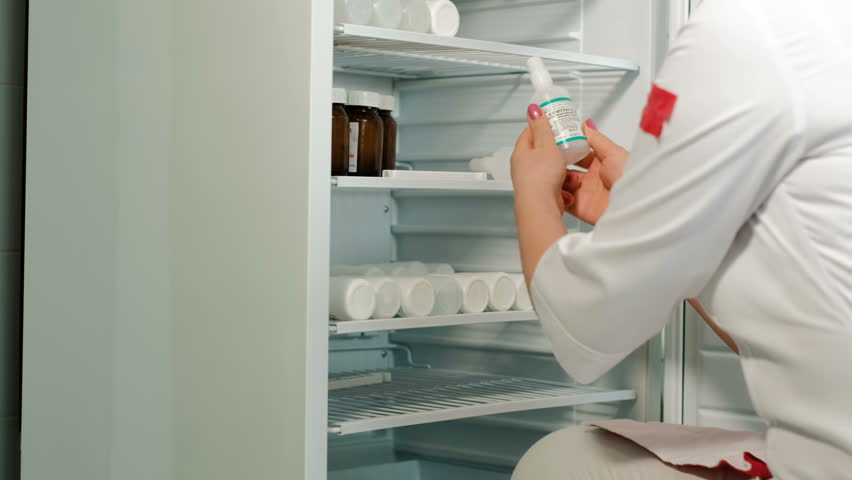
Then it is necessary to wash off the washing solution with clean water.
The third stage of cleaning
We will continue spring cleaning at the medical facility. The algorithm of actions is as follows:
1. Begin disinfection of the room. The prepared solution and clean rags treat all surfaces in the appropriate order:
- Ceiling of the wall.
- Window frames of glass.
- Windowsills
- Heating radiators.
- Furniture.
- Sink.
- The floors.
2. After wiping the floor with a disinfectant solution, move the furniture to the treated areas. Used rags for processing are thrown into a garbage container.
3. In conclusion, containers for garbage collection are treated with disinfectant solutions.
4. Next:
- Take off gloves, special protective clothing, a mask, put in a special bag for dirty laundry.
- Signets are disposed of.
- Hands must be washed, treated with an antiseptic.
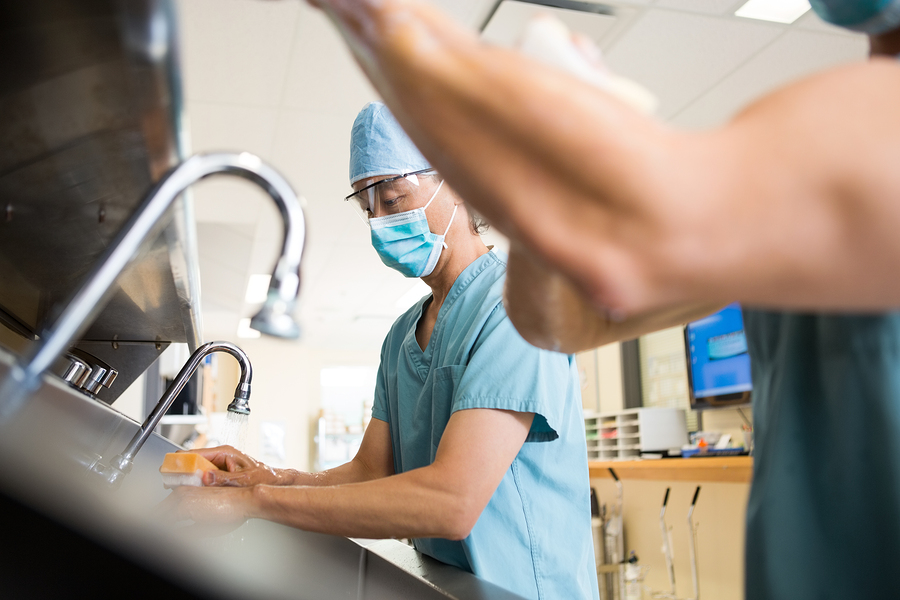
- Close the room for the necessary time for disinfection.
After passing the desired time, they proceed to the next step.
The fourth and fifth stages of cleaning
After the disinfection time has passed, you must:
- Wear clean clothes, a mask, a hat, gloves.
- Wash hands, clean shoes.
- Rinse containers with disinfectant solution with clean water.
- Pour tap water and wash all surfaces that have been treated in the same sequence as the solution was applied.
- Wipe dry windows and surfaces with a clean, dry cloth, if required by the instructions for use of the disinfectant.
- In sterile blocks, sterile rags are used for processing.
- At the end, wash the floors with tap water. Use clean rags. The bucket should be marked.
- Remove clothes, mask, hat, gloves.
- Laundry clothes.
- Dispose of gloves, hat and mask.
- To wash hands.
Then proceed to the final stage:
- Turn on a bactericidal lamp.
- The magazine notes the time of quartzing of the premises and the general cleaning.
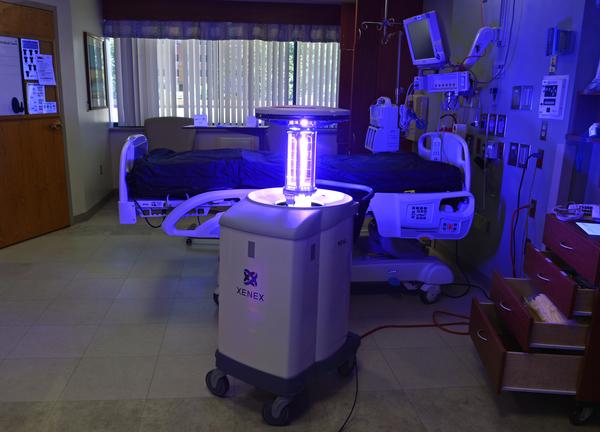
After the set time has passed, the room is ventilated for 15-20 minutes, depending on the weather.
For the final stage of general cleaning in a medical institution, the procedure is as follows:
1. After the cleaning is completed, it is necessary to decontaminate the equipment that was used. Perform disinfection:
- Rags.
- Rags for the floor.
- Inventory.
2. After disinfection, rinse everything in clean water and dry. The rags are sent to the wash.
3. Before the onset of the cold season, cleaning includes washing windows on both sides and tightly closing the frames.
First aid for poisoning
Medical personnel working with disinfectants should know the first signs of poisoning in order to provide the necessary assistance:
- Irritating to respiratory system.
- Sneezing.
- Sore throat.
- Lacrimation.
- Irritation of the skin and mucous membranes.
What to do:
- If the solution gets on the skin, you need this place under running water for 10 minutes. Then grease with cream.
- If the solution gets on the mucous membrane of the eye, rinse immediately with clean water for 15 minutes and consult an ophthalmologist. Great risk of corneal burns.
- If the solution enters the oral cavity, there is a danger of burns. Rinse your mouth with running water and take 10-15 tablets of "Activated Carbon". Drink plenty of water. There is no need to induce vomiting.
- With irritation of the respiratory system, the victim is taken to fresh air. Rinse mouth and nose with clean water. It is necessary to drink warm milk.
- After emergency assistance, if necessary, the victim may consult a doctor.
Exercise control
Each medical institution has its own cleaning schedule. Periodically monitored:
- Magazines of general cleaning.
- The register of quartzization of premises.
- The knowledge of medical personnel about the method of preparing disinfectant solutions and working with them.
- Knowledge of the rules for cleaning in medical institutions.
- Monitoring the storage and use of disinfectant solutions and detergents.
In the premises, cleanliness is periodically assessed visually and using flushes from certain areas, such as:
- Patient care items.
- The surface of the apparatus of artificial respiration.
- Medical gowns.
- Flushing from the hands of medical personnel.
- Work surfaces.
- Medical instruments and equipment.
If the epidemiological situation is complicated, air samples are also taken.
General cleaning in medical facilities can be carried out ahead of schedule if the results of flushing and sowing from the air were unsatisfactory. The corresponding entry is made in the journal.
Inspections can be both planned and sudden for objective monitoring.
